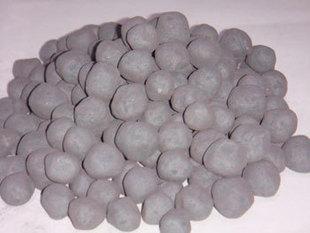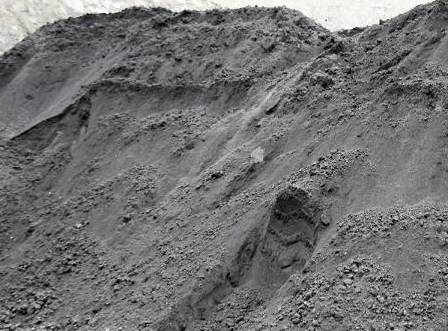Application of Vanadium Titanium Iron Concentrate Pelletizing
According to the different subsequent smelting processes, vanadium-titanium iron concentrate pellets determine their respective application fields. Vanadium-titanium iron concentrate acid oxidation pellets are mainly used in blast furnace smelting, blast furnace burden protection and gas-based shaft furnace reduction, but vanadium-titanium iron concentrate carbon pellets are mainly used in coal-based direct reduction.
Application of Acid Oxidation Pellets of Vanadium Titanium Iron Concentrate
1. Iron raw materials for blast-furnace smelting
The burden structure of blast furnace smelting is basically high basicity sinter with a certain proportion of acid oxidized pellets, and the proportion of acid pellets is 20-30%. Due to the particularity of vanadium-titanium iron concentrate in blast furnace smelting, vanadium-titanium iron concentrate is more suitable for producing pellets, and preparing acid oxidized pellets is the best utilization way in blast furnace smelting. The characteristics of acid oxidized pellets include low reduction pulverization rate at low temperature, good reduction ability at medium temperature and low body expansion rate. In general, the bulk expansion rate is within 10%, the high-temperature metallurgical performance is good, and the softening temperature is high. After adding acid oxidized pellets to the blast furnace, the advantage of the low position of the softening interval of the burden will not be changed, and the air permeability of the softening interval can be improved. At the same time, acid oxidation pellets reduce dust pollution, improve TFe grade and reduce impurities, thus saving energy consumption and easy desulfurization by oxidation roasting.
2. Burden for blast furnace protection
Acid oxidized pellets can also be used as furnace protection materials for blast furnaces. In order to avoid the malignant accident of blast furnace hearth burning, metallurgical workers attach great importance to the longevity and safety of the hearth. The decisive factors for maintaining the longevity of the blast furnace mainly blast furnace operation and adding titanium protective burden. The TiO2 grade of acid oxidized pellets is about 12%, which can meet the needs of protective burden. Furnace protection material is to form a high melting point titanium-containing compound deposit layer in the hearth to prevent slag iron from further eroding the hearth, hearth bottom and refractory materials. The acidic oxidized pellets are mainly composed of Fe2O3 and ferruginite under a reducing atmosphere. As that temperature in the furnace rise, complex Ti compounds are converted into slag containing TiO2, TiO2 is gradually reduced to Ti, and finally combined with C and N to form TiC and TiN, most of which are dissolved in molten iron. When the titanium content is higher than the saturated solubility of molten iron, TiC and TiN are precipitated and deposited on the furnace wall as solid crystals. When the deposition amount reaches a certain thickness, the furnace protection effect can be achieved. The more deposition, the better the furnace protection effect will be.
3. Reducing raw materials by gas-based shaft furnace
In the reduction of acid oxidized pellets in a gas-based shaft furnace, gas is used as a reducing agent. The main components of the gas are H2 and CO. The reducing gas passes through the pellets from bottom to top. Under the condition of being lower than the softening temperature of the acid oxidized pellets, the pellets are gradually preheated and reduced to obtain metallized pellets. The residence time of the pellets in the reduction zone is generally 6 hours. This process has the characteristics of large production scale, environmental friendliness and less carbon emissions. In addition, the reduced product has less impurities, improves the product quality, and has a very promising development prospect.
Pellets with Internal Carbon as Raw Materials for Coal-based Direct Reduction
Internal carbon pellets can be used in coal-based direct reduction processes such as rotary hearth furnace, car hearth furnace, rotary kiln, coal-based shaft furnace, etc. Among them, rotary hearth furnace direct reduction process is the third generation new ironmaking process specially recommended in China, which comprehensively recycles iron, vanadium and titanium. In the rotary hearth furnace production process, it needs to be transported, Distribution, reduction, discharging, etc., all factors affect the smoothness and efficiency of the furnace bottom. Carbon pellets in vanadium-titanium iron concentrate have the characteristics of low energy consumption, good metallurgical properties, short production cycle, low cost, less pollution, etc. It is extremely important to obtain higher metallization rate in direct reduction production of metallized pellets. The metallized pellets are deeply reduced and melted in an electric furnace to obtain vanadium-containing molten iron and electric furnace slag. At this time, the grade of TiO2 in the electric furnace slag is about 50%, compared with the grade of blast furnace slag of about 22%. The electric furnace slag has very good utilization value, realizes the recovery of titanium, and can be used for the production of titanium dioxide raw materials by sulfuric acid method.






